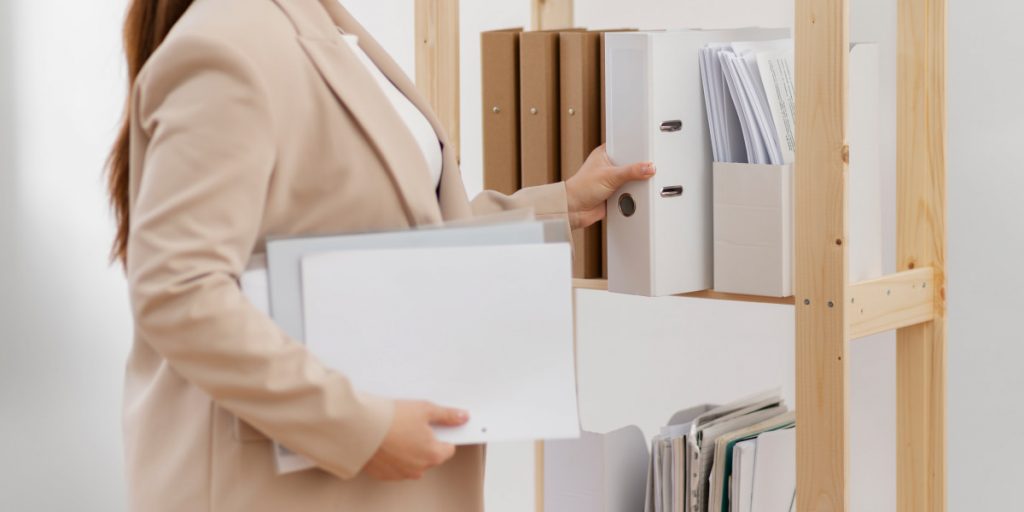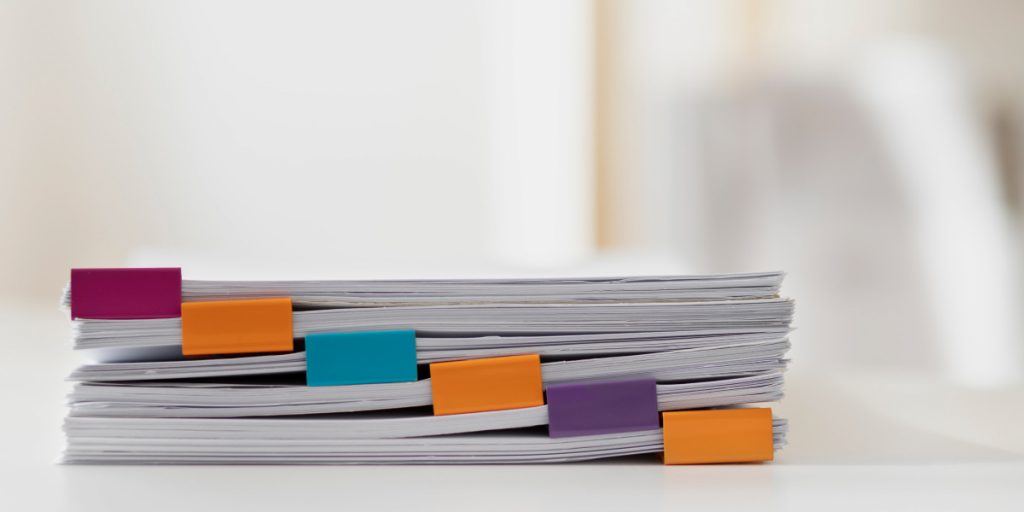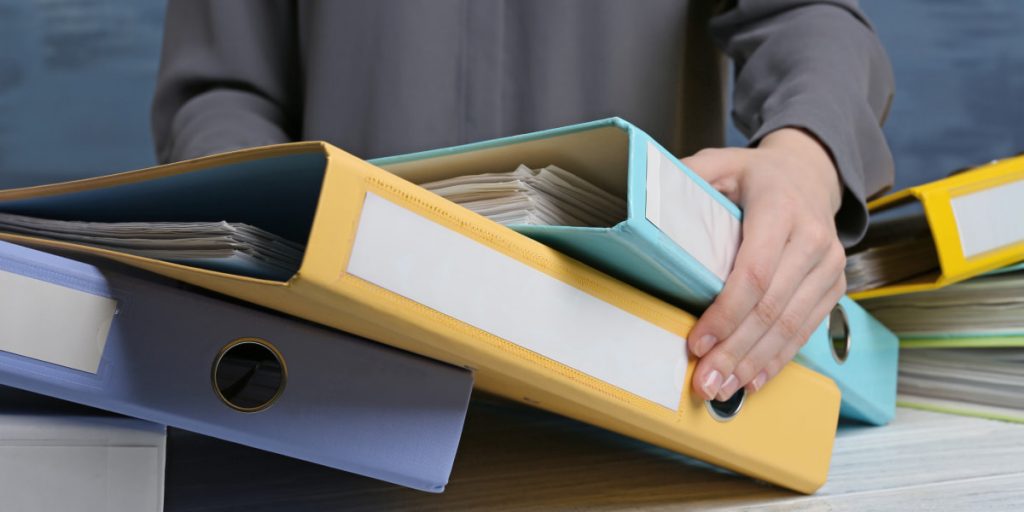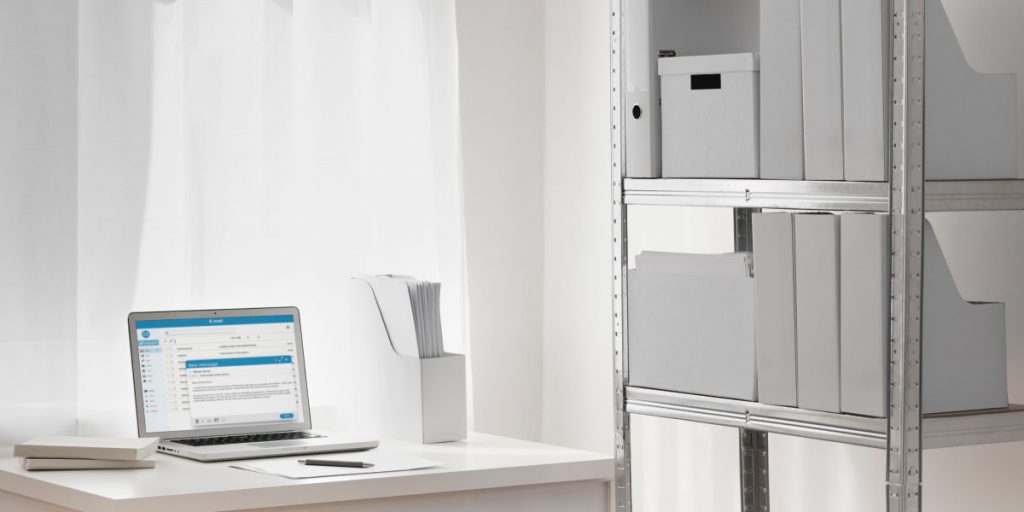Published on August 17th, 2022
Last updated on February 6th, 2023
8 Paper Organization Ideas: Banishing Home Workspace Paper Clutter

Everyone knows that working with papers takes up a considerable amount of space, and if you don’t organize your workspace within time, you risk creating a paper mess. Of course, it is impossible to work in such an environment. Looking for ways to organize all of your paper-based projects? Luckily I have found a way and am ready to present you with the best tips and paper organization ideas.
Whether you’re looking for a system that works for your home office or need help getting your student’s work under control, these tips can help. Remember that what works for one person might not work for another, so be sure to find a system that suits your individual needs. Happy organizing!
Why Should One Think About Organizing Your Home Papers?
Papers can quickly become unorganized and overwhelming. If you don’t have a system for storing and organizing your home papers, it can be challenging to find what you need when you are in need. A proper organization system can help you stay on top of your paperwork and make it easier to find what you’re looking for.
Simply put, your work’s speed, efficiency, and accuracy depend on your workspace’s organization. It’s one thing if you were working with a laptop and one notebook with a pen, and another if you were working with a lot of documentation in which you aim not to get lost.
Here’s why you should do it:
- Visual order. This way, you will be able to work more efficiently, as your eyes won’t get tired of the massive amount of paper on the table;
- It is easier to motivate yourself and systematize the work;
- Increased speed and efficiency.
File Storage Ideas
There are a few different ways that you can organize your papers. One way is to store them by file type. For example, you could have a file for bills, another for school papers, and another for personal documents.
Another way to organize your papers is to store them by date. This can be helpful if you need to access documents from a specific period. You could also keep your papers by subject matter. This might be helpful if you have a lot of documents related to one topic.
No matter how you organize your papers, it’s essential to have a system that works for you. Taking the time to set up a paper organization system can save you time and frustration in the long run. Now, let’s take a closer look at the best tips in the following blocks.
#1: Sort Paper Into Categories

Keep bills, school papers, magazines, etc., in hanging folders by category. This will help keep your papers more organized and quickly found when needed.
#2: Create A Filing System For Each Category (Folders, Binders, Boxes, etc.)

By placing sorted documents or other papers in special compartments, you can achieve the efficiency of your workflow. From the beginning, you can take exactly what you need and not waste time thinking about where and what it is. And at the very end, you will not need to waste time collecting everything in one pile since all documents will already be sorted in advance. Due to these reasons, this method is crucial for organizing home paperwork.
#3: Use Labels To Identify Each Category And Subcategory Of Papers

This will make it easier to file papers away and to find them when you need them.
Consider creating a file for each family member, and within that file, separate folders for important documents, school papers, medical records, etc.
Use stickers or other methods to mark your work papers. You can also sign them with a pencil.
#4: Store Paperwork In An Easily Accessible Location

If you want to get your papers quickly, you should take care of where they will be stored. So, it is best to use a particular cabinet or another compartment that you can easily reach. If there is no closet, you can build one like it. And if you don’t feel like that, you can put boxes with documents next to your workplace. This will allow you to get working papers and always keep them in sight quickly.
#5: Use A Scanner To Create Digital Copies Of Important Documents

Another best way to organize paper files is to scan and save digital copies of important documents. This way, you can access them easily and don’t have to worry about losing them. You can also create a paperless system by setting up file folders on your computer and storing all your documents electronically.
If you have a lot of school papers or other paperwork that you need to keep track of, consider investing in a scanner so you can scan and save digital copies. This way, you’ll always have a backup and won’t have to worry about misplacing anything. You can also use a labeling system to track what’s in each file and its location.
#6: Keep Track Of Deadlines With A Calendar Or Timeline

Create a timeline or calendar to keep track of deadlines associated with your paper documents. This can help you stay on top of bill payments, tax paperwork, and other time-sensitive items. Post the timeline or calendar in a central location where everyone in the family can see it.
Staying organized with your paper documents doesn’t have to be complicated. By following these simple tips, you can keep your papers sorted.
#7: Set Up A Shredder To Destroy Confidential Information

As soon as your deadline ends, you can destroy all unnecessary documents with the help of a shredder with confidence and without a twinge of conscience. This is much better than organizing paper clutter.
However, always be careful when using it, as it can harm your hands. Your best bet is to buy a good shredder with extra protection to keep you safe.
With the help of a shredder, your boxes will be gradually emptied of unnecessary documents, and you will not litter your house with unnecessary waste paper.
#8: Make Use Of Vertical Space By Using Wall Organizers

You can use the walls if your room or office doesn’t have space for papers on the floor. So, invest in wall organizers to take the pressure off the floor and place your papers on the wall. Thus, you can easily reach the papers, and your path inside the room will not be blocked by boxes.
Installing such shelves is not difficult and does not require much time. Everything can be done in an hour, making it one of the best ways to organize papers.
Bottom Line
Of course, the order is the main advantage of organizing your workspace with papers. But in addition, you will also get speed in work, and you will be more motivated to work and increase your efficiency.
By dividing all the papers by category and into the right shelves, you will ensure that you can quickly find exactly what you need among a pile of paper. And in the case of an unforeseen situation, you will never forget essential documents like a passport, home documents, or other important papers.
As you can see, organizing home paperwork is not that difficult, unlike other chores around the house, such as cutting tiles for repairs. However, even in the workspace organization, some details are worth attention. Your goal is to ensure you can interact quickly and efficiently with your papers. Whether it’s the usual monotonous paying bills or you’re in a hurry to the notary, you urgently need documents for your house.
FAQ
How to organize papers?
Organizing papers is easy enough. You need to come up with categories, place your papers into them and find a place where you will store these papers. To do this, use boxes or special folders.
What to pay attention to when organizing the papers?
The main thing you should pay attention to while sorting your documents is the convenience and speed of interaction. You need to easily sort documents to distinguish the paper you need from others and quickly get it for work.
What are the benefits of organizing the papers?
The clear benefits of organizing your work papers are that they give you quick interaction, increase work efficiency, and provide visual order for your workspace.
What is the best approach to organizing the papers?
There is no best approach for this since each person is individual and different methods suit each of us. Some prefer to mark papers with stickers, others with flowers, or to sort documents alphabetically.





